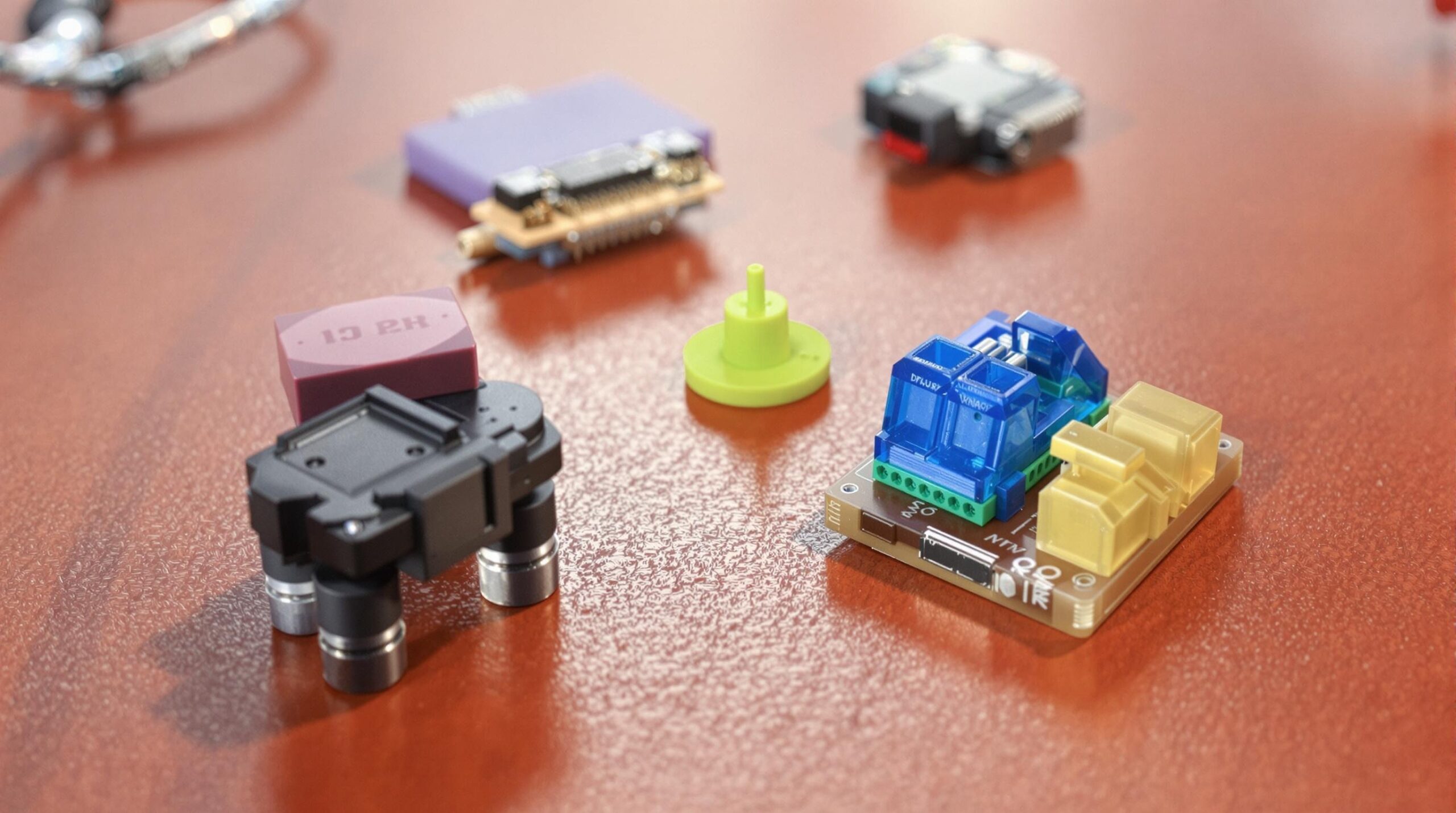Resin 3D printing has revolutionized the creation of custom gadgets and electronic accessories by offering unmatched precision and detail. From smartphone cases with intricate designs to fully functional electronic prototypes, resin 3D prints provide makers and manufacturers with the ability to produce high-quality, customized products that weren’t possible with traditional manufacturing methods.
Key Takeaways
- Superior detail quality makes resin 3D printing ideal for intricate electronic accessories
- Custom smartphone accessories represent the largest market segment for resin-printed gadgets
- Resin 3D prints allow for rapid prototyping of electronic devices before mass production
- The technology enables personalized gadgets with custom ergonomics for individual users
- Resin-printed components offer functional durability when proper post-curing techniques are applied
Why Resin 3D Printing Excels for Electronic Accessories
Resin 3D printing, also known as stereolithography (SLA) or digital light processing (DLP), offers significant advantages over FDM (fused deposition modeling) when creating electronic accessories. The liquid resin cured by UV light creates objects with much finer detail and smoother surfaces without the visible layer lines common in FDM prints.
This technology produces parts with tolerances as fine as 25-50 microns, making it perfect for small electronic components that require precise fits. The smooth surface finish of resin 3D prints also reduces the need for post-processing when creating consumer-facing products.
Modern specialized resins have expanded the possibilities beyond just aesthetic models. Engineering resins offer heat resistance up to 238°C, while flexible resins provide rubber-like properties for grip-enhanced gadgets. There are even electrically conductive resins available for creating simple circuits directly in printed parts.

1. Custom Smartphone Cases and Accessories
The smartphone accessory market has embraced resin 3D printing technology to create truly unique cases and add-ons. Unlike mass-produced options, resin-printed cases can feature personalized designs with intricate details impossible to achieve through injection molding at small scales.
Phone grips, camera lens attachments, and custom mounting brackets benefit from the dimensional accuracy of resin printing. These accessories require precise fits to function properly with specific device models. The ability to iterate designs quickly allows creators to perfect the fit and function before finalizing products.
Popular designs in this category include:
- Smartphone cases with integrated stand mechanisms
- Custom lens attachments for smartphone photography
- Personalized phone grips with ergonomic designs
- MagSafe-compatible mounting accessories
2. Custom Earbuds and Audio Accessories
The audio accessory market has found resin 3D printing particularly valuable for creating custom-fit earbuds and headphone components. Using 3D scans of an individual’s ear canal, perfectly fitted earbuds can be printed that provide superior comfort and sound isolation.
Beyond personal audio devices, resin printing enables the creation of specialized audio gadgets like custom microphone mounts, headphone stands with integrated cable management, and acoustically engineered speaker enclosures. The high detail capability allows for precise acoustic channels and sound-directing structures.
Audiophiles appreciate how resin printing allows for:
- Custom IEM (in-ear monitor) shells tailored to individual ear anatomy
- Replacement parts for high-end headphones
- Acoustic modification accessories for existing audio equipment
- Specialized microphone shock mounts and pop filters
3. Electronic Device Stands and Docks
Resin 3D prints excel at creating functional device stands and docking stations that securely hold smartphones, tablets, and other gadgets. These accessories can be customized to accommodate specific device models while incorporating cable management solutions and viewing angle adjustments.
The precision of resin printing ensures that charging ports align perfectly with cables when devices are docked. Many designs incorporate hidden cable routing that keeps workspaces tidy while maintaining full functionality.
Popular stand and dock designs include:
- Multi-device charging stations that organize several gadgets
- Adjustable tablet stands for various viewing angles
- Desktop phone docks with integrated wireless charging
- Specialized stands for gaming controllers and peripherals
4. Custom Mechanical Keyboard Components
The mechanical keyboard community has embraced resin 3D printing for creating custom keycaps and keyboard cases. The detail resolution of resin printers allows for intricate legends and textures on keycaps that remain crisp and readable.
Beyond aesthetics, functional keyboard components like switch openers, stabilizer mounts, and custom layout plates benefit from the dimensional accuracy of resin printing. Enthusiasts can create completely personalized keyboards that match their specific ergonomic needs and aesthetic preferences.
Keyboard enthusiasts regularly print:
- Artisan keycaps with complex 3D designs
- Custom keyboard cases with integrated wrist rests
- Switch testing tools and modification accessories
- Specialized layouts for ergonomic keyboards
5. Camera Accessories and Photography Gear
Photographers benefit from resin 3D printing to create custom accessories that enhance their existing camera equipment. From lens caps and filter adapters to camera cages and flash diffusers, the precision of resin prints ensures these accessories interface perfectly with expensive camera gear.
The ability to create custom mounting solutions allows photographers to position lights, microphones, and monitors exactly where needed. Specialized grips and ergonomic extensions can be tailored to individual hand sizes and shooting styles.
Popular photography accessories include:
- Custom lens hoods designed for specific shooting conditions
- Follow focus rings with personalized grip patterns
- Flash modifiers and light-shaping tools
- Camera-specific L-brackets and quick release plates
6. Gaming Accessories and Controller Modifications
Gamers use resin 3D printing to create custom controller parts and accessories that enhance gameplay. From extended trigger buttons to ergonomic grips, these modifications can be tailored to individual playing styles and hand sizes.
The detailed surface finishes possible with resin printing create comfortable, non-slip textures for controller grips. Game-specific accessories like custom display stands for collectibles or specialized storage solutions for game cartridges provide functional and decorative options for gaming enthusiasts.
Popular gaming accessories include:
- Custom D-pad and button replacements
- Controller stands with integrated charging
- Console-specific cooling attachments
- Mounting brackets for portable gaming devices
7. Wearable Technology Enclosures
The wearable tech industry benefits from resin 3D printing for creating custom device housings and bands. Smartwatch straps, fitness tracker enclosures, and specialized mounts for wearable cameras can all be customized to fit individual body types and usage scenarios.
Biocompatible resins make it possible to create wearable accessories that remain comfortable during extended contact with skin. The detail resolution allows for intricate design elements that distinguish custom wearables from mass-produced alternatives.
Common wearable tech applications include:
- Custom smartwatch bands with integrated storage
- Specialized mounts for wearable action cameras
- Enclosures for DIY fitness tracking devices
- Custom glasses frames with integrated tech components
8. Electronic Project Enclosures and Prototypes
Makers and electronics hobbyists rely on resin 3D printing for creating custom project enclosures that perfectly fit their circuit boards and components. These enclosures can incorporate precise cutouts for ports, buttons, and displays while maintaining a professional appearance.
The rapid prototyping capabilities allow inventors to quickly iterate through designs before finalizing products. Transparent resins enable the creation of enclosures that showcase the internal components while providing protection and structure.
Popular electronic project applications include:
- Custom Raspberry Pi and Arduino enclosures
- Specialized housings for sensors and IoT devices
- Test fixtures for electronic component validation
- Prototype casings for product development
Post-Processing Techniques for Resin 3D Prints
Achieving professional-quality electronic accessories requires proper post-processing of resin prints. After printing, parts need thorough cleaning in isopropyl alcohol to remove uncured resin, followed by additional UV curing to reach full material strength.
Sanding progresses through grits (starting at 400 and moving to 2000+) to eliminate layer lines and print artifacts. Many creators apply primer before painting to ensure smooth, even color application. Clear coats provide protection and can add gloss, satin, or matte finishes depending on the desired aesthetic.
Advanced finishing techniques include:
- Vapor smoothing for ultra-smooth surfaces
- Metal plating for decorative or functional purposes
- Silicone molding to reproduce successful designs
- Hydro dipping for complex color patterns
Challenges and Limitations
Despite its advantages, resin 3D printing presents certain challenges for electronic accessory creation. The post-processing requirements add time and complexity compared to FDM printing. Uncured resin requires careful handling due to its toxicity, demanding proper ventilation and protective equipment.
Size limitations restrict most consumer resin printers to relatively small objects, typically under 200mm in any dimension. While this covers most accessories, larger items may need to be printed in sections and assembled. The higher material cost of resin compared to filament also increases production expenses.
Finally, resin prints typically remain more brittle than their FDM counterparts, making them less suitable for high-impact applications unless specialized tough resins are used. This brittleness requires careful design consideration for items that may experience drops or significant stress.
Future Trends in Resin Printed Electronics Accessories
The future of resin 3D printing for electronic accessories looks promising with several emerging trends. Multi-material resin printers are beginning to enter the market, allowing for parts with varying flexibility, color, and functional properties in a single print.
Advancements in biocompatible and electrically functional resins will expand applications in wearable technology. The growing accessibility of high-resolution



